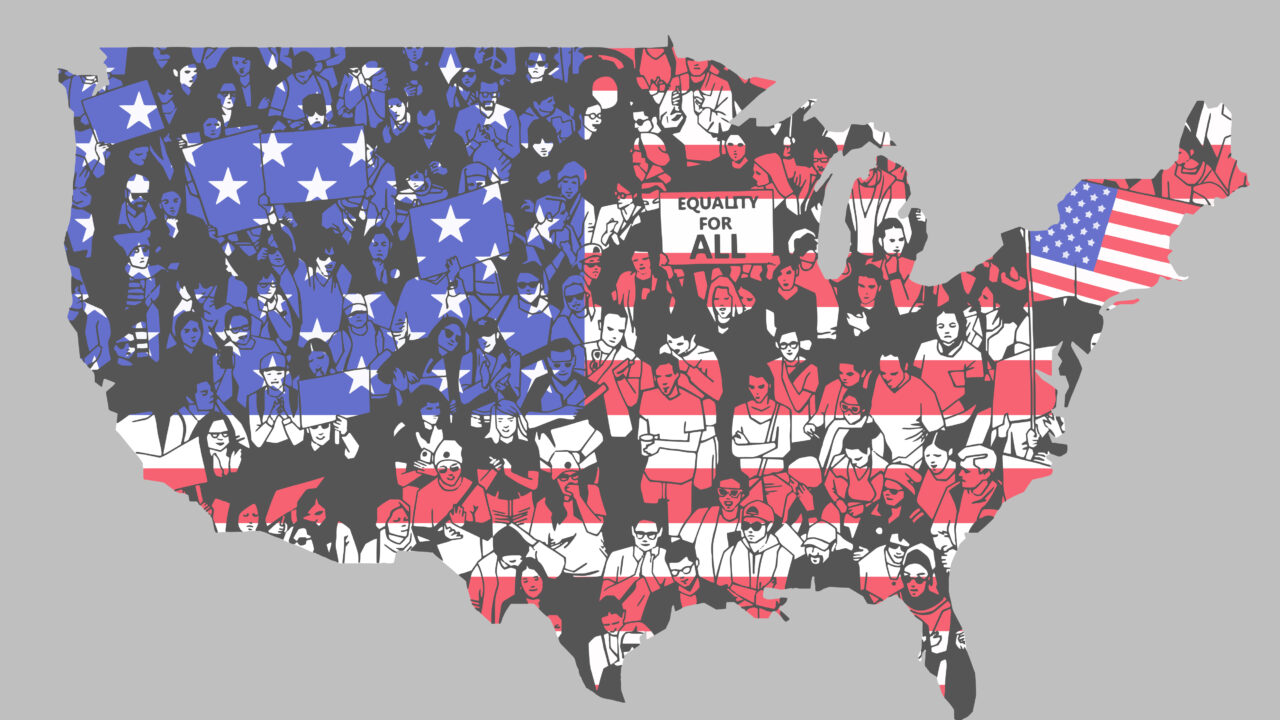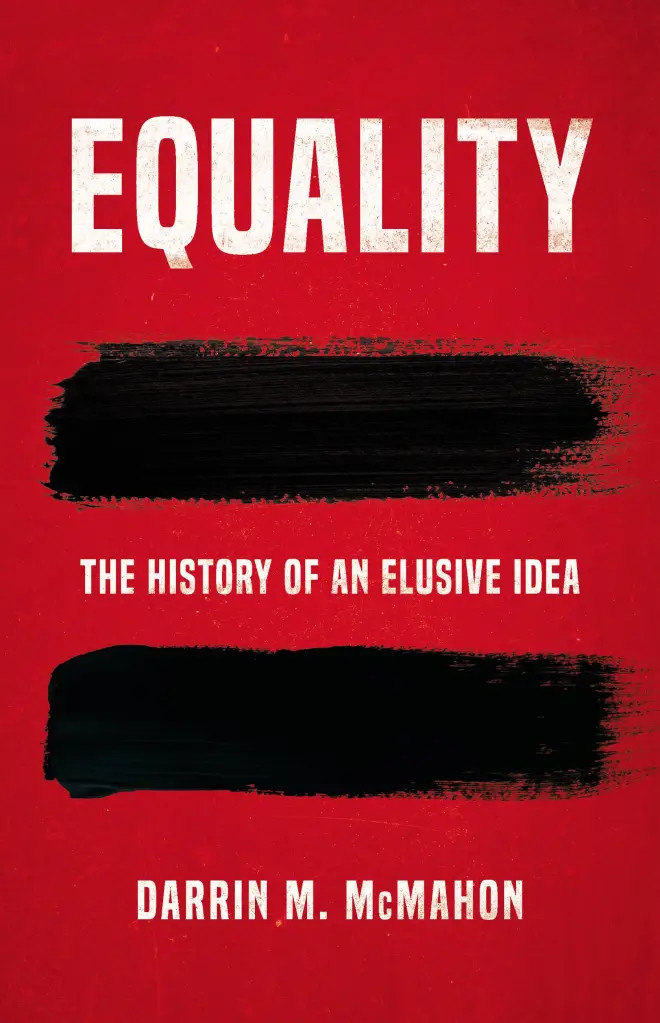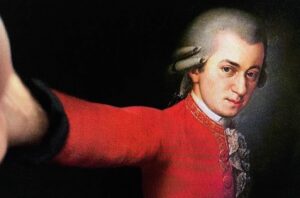Truths Not Always Self-Evident
A new book looks at the history of equality in theory and in practice. Image: Adobe
Image: Adobe
We hold these truths to be self-evident, that all men are created equal, that they are endowed by their Creator with certain unalienable Rights, that among these are Life, Liberty and the pursuit of Happiness.
Thomas Jefferson wrote these memorable words in 1776. Meanwhile, over the course of his lifetime, he owned some 600 human beings, buying and selling them as needed, keeping about 130 in bondage at any one time. Jefferson’s appalling hypocrisy may be explained — but not excused — by the fact that he did not consider enslaved people equal to members of the white race. They were not the “men” he was referring to when he wrote the Declaration of Independence. They did not have the unalienable right to life, liberty or the pursuit of happiness.
Jefferson confirmed this belief in his “Notes on the State of Virginia” in 1785, where he expressed his “strong suspicion” that Negroes were inferior to whites in both mind and body, either because they were a “distinct race” or due to “time and circumstances.”
It is the gap between the ideal of equality and the reality of inequality that animates Darrin M. McMahon’s sweeping historical survey, “Equality: The History of an Elusive Idea.” What is equality and why is such a familiar concept so elusive? Will it forever remain an aspiration, or can societies, including our own, actually achieve equality? If we do, what would it look like?
Spanning thousands of years, from hunter-gathers and foragers to patriarchs and kings, to popes, prophets and philosophers, to Marxists and Fascists, to Occupy Wall Street and Black Lives Matter, McMahon explores the ideas of equality — in the plural. He sees “equalities of income and of wealth, of outcome and opportunity, of ends and means.” He explores “civic equality, social equality, legal equality, and the equality of rights, along with the equality of education and access, welfare and well-being, dignity and respect.”
McMahon admirably fills that void and sheds light on the complex, contradictory and elusive history of an idea that remains central to understanding and overcoming the persistent disparities in wealth, income and status.
McMahon says he was motivated to write the book because “scholars have paid surprisingly little attention to the ways in which ideas of equality have been understood in the past.” He quotes one authority who observes that “the conceptual history of equality remains almost entirely unwritten,” with another adding, “the whole issue has been, to a quite remarkable extent, shrouded in neglect.” With a few exceptions noted later, McMahon admirably fills that void and sheds light on the complex, contradictory and elusive history of an idea that remains central to understanding and overcoming the persistent disparities in wealth, income and status that continue to plague the United States and countries around the world.
This is no triumphal cheerleading exercise celebrating how the arc of history has brought us to the paradise of equality, a colorblind world where the essential dignity of every person is recognized and respected. This is a sober assessment; it fully acknowledges that when we talk about human rights we are talking about humans, with all their jealousies and conceits, their flaws and prejudices, their selfishness and insecurities.
In broad strokes, McMahon, the Mary Brinsmead Wheelock Professor of History at Dartmouth and author of “Happiness: A History and Devine Fury: A History of Genius,” offers five insights on equality that draw from his engaging and informative study of diverse cultures and societies across the centuries.
First, he convincingly rebuts the notion that the concept of equality was first developed as a result of European encounters with Indigenous peoples or, more conventionally, was the invention of the Enlightenment or the American and French Revolutions. “Ideas of equality had a long and rich history prior to the seventeenth and eighteenth centuries,” he writes, “and that deep history inevitably bore on its modern emergence, shaping and inflecting it in important ways.”
It was “self-evident” to Jefferson that “all men are created equal” only because that idea had already become a commonplace of Stoic philosophy and Roman law. It was given enduring formulation in the sixth century C.E. by Pope Gregory the Great, who affirmed, “All men are born equal by nature.”
Even earlier, what anthropologists describe as “fierce egalitarianism” characterized hunter-gatherer societies in the wake of the emergence of modern Homo sapiens some 300,000 years ago. On every inhabited continent several features recurred: broad material equality among members of the group; social arrangements without formalized leadership structures; and a variety of policing mechanisms to reinforce the dominant “egalitarian” ethos, such as the elaborate food-sharing rules observed among the Inuit people of the Canadian Arctic. These mechanisms, according to McMahon, “feature strong social sanctioning to reinforce altruism, reciprocity, self-sacrifice, and humility, along with a variety of leveling mechanisms designed to forestall the emergence of dominant individuals.”
He is quick to note, however, that these hunter-gatherer peoples were by no means leaderless, even if they tended to make decisions collectively. “Admired individuals — respected for their physical prowess, intelligence, experience, or skill,” he explains, “inevitably play an outsized role in deliberations, and they assume special prominence in times of emergency or war.” But if they were first among equals, their authority was never institutionalized; it was always carried out in deference to the larger group. If they overstepped their bounds or exhibited incipient signs of superiority, leveling mechanisms were brought to bear to bring them back in line. When those failed, the group was prepared to resort to ostracism, banishment and even murder.
McMahon’s vivid examination of these early (he avoids the label “primitive”) societies, combined with his revealing descriptions of the ways our cousins the chimps, gorillas and bonobos (with whom we share as much as 98.8% of our DNA) exhibit reciprocity, empathy, compassion and other forms of “prosocial behavior,” casts serious doubt on the pessimistic view that we are forever hard-wired to commit violence and wage war.
His second important insight is the “enduring tension between difference and sameness in the long history of equality.” No two people are alike. Equality, McMahon explains, “is first and foremost a relationship that we conjure in our minds in order to draw comparisons between dissimilar things.” From our fingerprints to our facial features, as well as our hopes and dreams, human beings are different. Thus, claims of equality “necessarily involve the abstracting out of a shared characteristic (or characteristics).” Is there something essential in every human being that justifies a claim to equality? “From a common soul to a common humanity to a common place of birth, the rationales are extensive, and over time they have changed, privileging at various stages religion, reason, virtue, sex, race, age, and dignity, to name only a few.”
We want to be treated with fairness and on equal terms but we also seek distinction, aiming to set ourselves apart.
It follows that equality is perfectly compatible with difference and even presupposes it. “The equality in political, industrial, and social life which modern men [and women] must have in order to live,” W.E.B. Du Bois wrote in 1915, “is not to be confounded with sameness. On the contrary … it is rather insistence upon the right of diversity.” McMahon endorses Du Bois’ perspective, using it throughout his book to explain that just as people are obviously different in so many ways, they are equal in their shared humanity. It is this common humanity that should preclude the state from denying any person the fundamental rights they deserve.
Here, McMahon devotes considerable space to a contrary perspective on equality that emphasizes homogeneity over heterogeneity and erases individual diversity. He expects many will be surprised that Karl Marx and Friedrich Engels “lampooned the belief that “equality is the primordial intention, the mystical tendency, the providential aim” of society. “Liberal equality, for Marx,” McMahon writes, “was a specious and misleading abstraction. In a word, it was an illusion.” For Marx and Engels, equality “was of a piece with the other abstract rights granted to man and the citizen by the revolutions of the long eighteenth century.” As McMahon puts it, they believed that bourgeois “liberty” was in truth “a cover for egoism, a license to exploit others in keeping with the law,” obscuring “the inequalities hidden in equality’s name.” French novelist Anatole France famously summed up Marx’s and Engels’s critique in 1930 as follows: “The majestic equality of the laws . . . forbid the rich as well as the poor to sleep under the bridges, to beg in the streets, and to steal their bread.”
McMahon’s third and fourth themes build on one another. We want to be treated with fairness and on equal terms but we also seek distinction, aiming to set ourselves apart. “Status hierarchies take shape spontaneously in every place where human beings come together in groups,” he writes, and “[h]ungry for recognition, we crave acknowledgment and approval and we are resentful when it is denied.” He describes how the impulse to create hierarchies not only in business and the military, but in virtually every social setting, perpetuates inequalities, particularly where the higher status is undeserved and instead depends on entrenched and generational privilege often founded on racial, religious, ethnic and sexist prejudice.
That insight naturally leads to the fourth theme of the book, which explores “the great variety of uses to which ideas of equality have been put, many of which are scarcely egalitarian at all.” We’ve already noted a prime example. In the Declaration of Independence, with a straight face Jefferson could complain that the American colonists were being denied the equal rights of all Englishmen — citing a long list “of abuses and usurpations” designed to reduce him and his countrymen to “absolute Despotism,” while in that very moment he and his countrymen exercised an even greater form of “absolute Despotism” over the bodies and lives of the enslaved human beings they bought and sold.
Finally, in the last of McMahon’s themes, equality is exposed in its full paradoxical nature. “Not only are our understandings of equality consistent with hierarchy and exclusion, but they regularly serve as their very basis, acting to buttress and reinforce them,” he writes. Yet, instead of seeing hierarchy as a taboo, synonymous with domination or oppression, McMahon argues that hierarchy “is a system for allocating status and access to resources, whether of food, sex, money or power, and of establishing the criteria upon which that is to be done.” Hierarchy is not the same as domination, which is illegitimate authority based on force and threat. The question, therefore, is what criteria are being used, how are they agreed upon and who implements them. Equality becomes more about process than outcome. The goal is a process free of prejudice and arbitrary decision-making that is open and transparent, that offers opportunities without discriminating on invidious grounds, and that is legitimate and therefore egalitarian.
Toward the end of his book, McMahon wisely devotes considerable attention to how Dr. Martin Luther King Jr. thought, wrote and spoke about equality.
McMahon is generally adept at weaving these themes together across diverse cultures, so it is disappointing that the central conflict over equality in the United States — the Civil War, the abolition of slavery, Reconstruction and the lasting legacy of these pivotal events — receives such scant attention. While entire chapters are devoted to the Greeks and Romans, the American and French Revolutions and Hitler and Mussolini, there is no thorough analysis of the struggle to free enslaved people and ensure them equality. Instead, there is only a passing reference to slavery and a few quotes from Frederick Douglass.
Notably, the Fourteenth Amendment, which guarantees “equal protection of the laws,” is never mentioned despite the fact that it overruled the notorious 1857 Dred Scott decision. In that case, Chief Justice Roger Taney, speaking for the U.S. Supreme Court, confirmed Thomas Jefferson’s view when he wrote, “We think … that they [Black people] are not included, and were not intended to be included, under the word ‘citizens’ in the Constitution, and can therefore claim none of the rights and privileges which that instrument provides for and secures to citizens of the United States.” On the contrary, he explained, “they were at that time [of America’s founding] considered as a subordinate and inferior class of beings who had been subjugated by the dominant race, and, whether emancipated or not, yet remained subject to their authority, and had no rights or privileges but such as those who held the power and the Government might choose to grant them.”
Readers of such a comprehensive study of equality, with an emphasis on the United States, would have benefitted from McMahon’s analysis of these important historic events that figure so prominently in the American struggle for equality.
Toward the end of his book, McMahon wisely devotes considerable attention to how Dr. Martin Luther King Jr. thought, wrote and spoke about equality. In 1967, King reflected on the “magnitude of the gap between existing realities and the goal of equality.” King complained that there was not even a common language when the word equality is used. Whereas Black Americans “proceeded from the premise that equality means what it says,” white Americans “including many persons of goodwill, proceed from a premise that equality is a loose expression for improvement.”
For the vast majority of white Americans, the first phase of the civil rights movement, culminating in the passage of the Civil Rights Act of 1964 and Voting Rights Act of 1965, “had been a struggle to treat the Negro with a degree of decency, not equality,” King wrote. “White America was ready to demand that the Negro should be spared the lash of brutality and coarse degradation, but it had never been truly committed to helping him out of poverty, exploitation or all forms of discrimination.” And now, “when Negroes looked for the second phase, the realization of equality, they found that many of their white allies had quietly disappeared.”
In “Where Do We Go from Here: Chaos or Community?” (1967), King emphasized that “the present upsurge of the Negro people of the United States grows out of a deep and passionate determination to make freedom and equality a reality ‘here’ and ‘now.’”
Sadly, the decades-long reduction in income and wealth inequalities in the global north in the years following World War II began to slow in the 1970s, and by the 1980s, a reversal was underway. “It gathered force in the following decades,” McMahon writes, “which witnessed the return of inequalities in income and wealth, above all in the United States, which eventually reached levels not experienced since the eve of World War I.” The fallout of the 2007-2008 financial crisis and the Occupy Wall Street movement that followed in its wake in 2011 helped to focus the issue.
If there is a lesson to draw from McMahon’s ambitious book, it is that equality will remain an elusive dream unless those of us who believe in it most ardently mount a sustained struggle to remove the obstacles that stand in its way.
In that year, Nobel Prize-winning economist Joseph Stiglitz popularized the pejorative term “the one percent.” The richest 1% owned 40% of the U.S. wealth and took in nearly 25% of its income. “From the glaring disparities in wealth and income between rich and poor, north and south, present or past,” McMahon writes, “to the disparate effects of climate change or pandemics, to the ongoing impacts of colonialism and slavery, to vastly different outcomes in education, life chances, and health owing to ethnicity, gender, or place of birth, the subject is as expansive as the inequalities that divide the people of the world.”
Accompanying these stark economic inequalities, McMahon sees distressing developments in politics and culture. “The global resurgence of right-wing populism since 2016, the year of Brexit and the election of Donald Trump, cast a harsh new light on the fissures dividing societies around the world.” Just as workers began grumbling about wealthy elites skimming off the gains of global growth, “populist-plutocrats and their well-heeled funders have been remarkably adept at displacing such resentment and channeling it toward immigrants and marginalized groups in their societies who have so long struggled for a modicum of equality themselves.”
Yet with bravery and hope McMahon emphasizes that his “entire book should serve as a reminder of what we have lately forgotten — that the human capacity to imagine equality is protean, and that the concept itself is tremendously adaptable and resilient. Periods far more unequal than our own have generated not just illusions, but productive hope and dreams. And even now, some have begun to dream again.”
One of them is French economist Thomas Piketty. While his 2013 unlikely global bestseller “Capital in the Twenty-First Century” detailed long-term trends in income and wealth inequality, a decade later in “A Brief History of Equality” (2022), he refused to give in to pessimism. He makes the case that “at least since the end of the eighteenth century there has been a historical movement toward equality.” He maps a strategy toward a “democratic, ecological, and multicultural socialism” on a world scale. The “movement toward equality is a battle that can be won,” even if it is “a battle whose outcome is uncertain.”
Historian Peniel E. Joseph, a leading American scholar of Black history, argues that the country’s recent racial strife is actually an opportunity. “A nightmare,” he points out, “is still a dream” and the dream is that the upheavals unleashed in the wake of the Obama presidency — the election of Donald Trump, the resurgence of white supremacy and the BLM activism following the murder of George Floyd — offer the prospect of a Third Reconstruction, a program of reconciliation, redemption and reparation in the service of racial justice.
McMahon sees these “distinguished voices putting the power of imagination to work right now, aiming to revivify revolutionary energies from centuries past and to carry them forward.” He admits that some will find them “visionary” and others “utopian,” but he encourages us to remember that “equality has always had a central place in utopian thinking for good reason: human beings often long to relate to one another more equally than they do, especially when gaps between them are achingly apparent.”
If there is a lesson to draw from McMahon’s ambitious book, it is that equality will remain an elusive dream unless those of us who believe in it most ardently mount a sustained struggle to remove the obstacles that stand in its way. McMahon’s book demonstrates that the arc of history may bend toward justice and equality, but it will not bend by itself. It needs dedicated people to devote their strength and their spirit to bending it.
Your support matters…Independent journalism is under threat and overshadowed by heavily funded mainstream media.
You can help level the playing field. Become a member.
Your tax-deductible contribution keeps us digging beneath the headlines to give you thought-provoking, investigative reporting and analysis that unearths what's really happening- without compromise.
Give today to support our courageous, independent journalists.







You need to be a supporter to comment.
There are currently no responses to this article.
Be the first to respond.